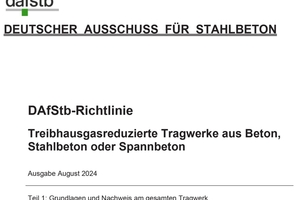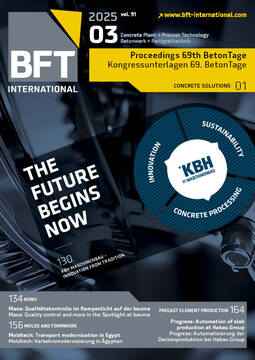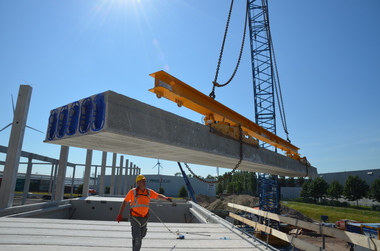Climate-friendly concrete construction using standardized benchmarks – The GHG guideline published by the DAfStb
The construction industry contributes significantly to climate change owing to the quantities consumed and greenhouse gases emitted, which are also referred to as embodied emissions. This is particularly true for concrete construction – the way we build with this material will continue to evolve against this backdrop. This is why the German Committee for Structural Concrete (DAfStb) is determined to drive the transition of concrete construction to climate neutrality. Its roadmap defines specific targets and measures required for this purpose. For this reason, the Technical Committee for Building Sustainably with Concrete (TA NBB) was founded in 2021 and tasked with developing projects to implement the targets. After about two years of drafting work within TA NBB, the white print of the new guideline on “Greenhouse gas reduced structures made of concrete, reinforced concrete or prestressed concrete” was published in August 2024. Part 1 and Part 2 of the guideline specify “Principles and verification for the entire structure” and “Structural floor components”, respectively, in terms of embodied emissions since these represent a considerable proportion of the total concrete volume.
The new guideline should provide specifiers, contractors, and building material suppliers with practical rules for mitigating and, even more importantly, verifying the greenhouse gas emissions of a construction project. This is achieved by introducing so-called greenhouse gas reduction classes, which make it possible to quantify the reduction in embodied emissions relative to a 2020 reference building and to enable project stakeholders to define these as a target. When drafting the guideline, TA NBB strongly focused on encouraging, rather than restricting, the creativity of all parties involved in the design and construction process. This is why the new guideline specifies clear “rules of the game” for quantifying greenhouse gas emissions, but it deliberately allows for freedom in their implementation. This is how the guideline intends to support transparent competition for the best solutions.










